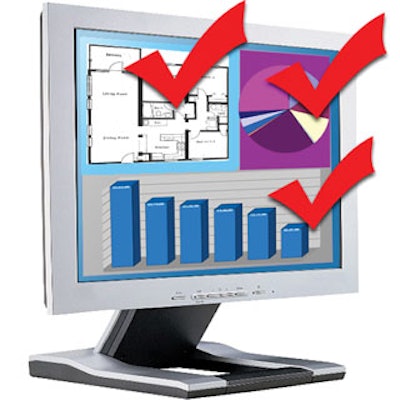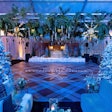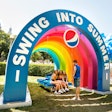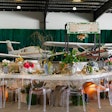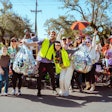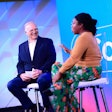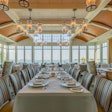Trying to predict which technologies will boom and which will bust is like trying to predict rain in Seattle. You know you are going to get wet sooner or later. But also know this: In 2005, technology will continue to trickle into the event-planning industry. Following are five trends that could figure in your plans over the next 12 months.
Driving Hybrids
If the word “hybrid” makes you think only of Harrison Ford’s Toyota Prius, wake up. Hybrid handheld devices will become must-haves for busy event and meeting planners. These all-the-rage, all-in-one wireless gadgets enable users to make phone calls; surf the Web; read and send email; keep track of contacts, appointments, and to-dos; even listen to MP3 music on one pocket-size device. This eliminates the need to carry your cell phone, PDA, iPod, notepad, and laptop computer everywhere. Among the hottest devices hitting the market are the PalmOne Treo 650, the Audiovox 6601 Pocket PC, the RIM BlackBerry 7750, and the Motorola Mpx220.
Wireless, Wireless Everywhere
If you’re trying to lure attendees to a large meeting and you are not ready to offer them wireless Internet access, you are in trouble. Wireless routers and hubs have become so inexpensive that meeting planners have almost no excuse not to offer free Internet access to attendees. Wireless local area networks (WLANs) will become ubiquitous across the meeting and conference landscape.
Many people are already familiar with Wi-Fi, or wireless access based on the 802.11b protocol. This technology, which transmits data at a maximum of 11 megabits per second, is popular at public sites like airports and Starbucks. But the world is quickly moving toward the 802.11g protocol, which supports speeds as high as 54 megabits per second. Fortunately, many new products—access points and WLAN-ready notebooks, for example—support both protocols.
Reaching for the APEX
Just think how much more efficient event planning would be if everyone in the industry used the same nomenclature and shared common documents. Wishful thinking, you say? Juli Jones, vice president of the Convention Industry Council (www.conventionindustry.org), promises that her group is working toward this bright future through its Accepted Practices Exchange, or APEX, program. APEX serves as a Webster’s dictionary of thousands of event-planning terms—from à la broche (cooked on a skewer) to zero-based budgeting—for all to share. Besides the glossary, APEX also offers common tools such as a post-event report and an event specifications guide in Microsoft Word and Adobe PDF formats free for anyone to use.
Now the APEX technology council, led by E. J. Siwek of Flashpoint Technologies, is working to make certain that these and other new tools—such as electronic RFPs—and the data in them can be shared among different computer systems. In 2005 we hope to see things like user-friendly templates and checklists and a comprehensive data map.
Paperless Leads
Wireless technologies, Web-based applications, and database software are advancing to the point where keeping paper attendee lists and exchanging business cards will soon go the way of the dodo. Systems are available now that embed an attendee’s contact and demographic information into his or her name badge, then share it seamlessly with event organizers. With all the clamor over performanceenhancing drugs in sports, it’s no longer politically correct to dub these “name tags on steroids.” But whatever they are called, they are revolutionizing conferences and trade shows.
Meeting planners can simply collect attendee data via the Web, then hire any one of dozens of technology vendors to download the information to each name badge. As the attendee strolls around the event, sensors automatically read his information on the badge, then pass it digitally to exhibitors, sponsors, or the company hosting the event. After the event, organizers can check a custom Web site to download their leads, making follow-up a snap.
Spin the Web
Web-based meeting planning tools continue to proliferate, says Corbin Ball, a meeting technology specialist in Bellingham, Washington, consolidating many of the innumerable tasks meeting planners face into digital one-stop shops. From creating attendee registration plans to sending RFPs to caterers, supersites such as StarCite.com, OnVantage.com, and Plan2attend.com empower meeting planners to track all their projects in one place—and share the load with teammates and colleagues.
Meanwhile, solution providers such as Ambassadors, Arcaneo, and Carlson Marketing Group continue to expand their online presence to corporate meeting planners. Arcaneo helps users to gauge meeting expenses and revenues. Meanwhile, Carlson has integrated its MeetingsLogic meetings management technology with online booking and profile management tools from Carlson Wagonlit Travel. Expect more of these integration
announcements throughout the industry in ’05.
—Matt Purdue
Posted 03.02.05
Photo illustration: Toni Lucatorto
This story originally appeared in the February/March 2005 issue of the BiZBash Event Style Reporter.
Driving Hybrids
If the word “hybrid” makes you think only of Harrison Ford’s Toyota Prius, wake up. Hybrid handheld devices will become must-haves for busy event and meeting planners. These all-the-rage, all-in-one wireless gadgets enable users to make phone calls; surf the Web; read and send email; keep track of contacts, appointments, and to-dos; even listen to MP3 music on one pocket-size device. This eliminates the need to carry your cell phone, PDA, iPod, notepad, and laptop computer everywhere. Among the hottest devices hitting the market are the PalmOne Treo 650, the Audiovox 6601 Pocket PC, the RIM BlackBerry 7750, and the Motorola Mpx220.
Wireless, Wireless Everywhere
If you’re trying to lure attendees to a large meeting and you are not ready to offer them wireless Internet access, you are in trouble. Wireless routers and hubs have become so inexpensive that meeting planners have almost no excuse not to offer free Internet access to attendees. Wireless local area networks (WLANs) will become ubiquitous across the meeting and conference landscape.
Many people are already familiar with Wi-Fi, or wireless access based on the 802.11b protocol. This technology, which transmits data at a maximum of 11 megabits per second, is popular at public sites like airports and Starbucks. But the world is quickly moving toward the 802.11g protocol, which supports speeds as high as 54 megabits per second. Fortunately, many new products—access points and WLAN-ready notebooks, for example—support both protocols.
Reaching for the APEX
Just think how much more efficient event planning would be if everyone in the industry used the same nomenclature and shared common documents. Wishful thinking, you say? Juli Jones, vice president of the Convention Industry Council (www.conventionindustry.org), promises that her group is working toward this bright future through its Accepted Practices Exchange, or APEX, program. APEX serves as a Webster’s dictionary of thousands of event-planning terms—from à la broche (cooked on a skewer) to zero-based budgeting—for all to share. Besides the glossary, APEX also offers common tools such as a post-event report and an event specifications guide in Microsoft Word and Adobe PDF formats free for anyone to use.
Now the APEX technology council, led by E. J. Siwek of Flashpoint Technologies, is working to make certain that these and other new tools—such as electronic RFPs—and the data in them can be shared among different computer systems. In 2005 we hope to see things like user-friendly templates and checklists and a comprehensive data map.
Paperless Leads
Wireless technologies, Web-based applications, and database software are advancing to the point where keeping paper attendee lists and exchanging business cards will soon go the way of the dodo. Systems are available now that embed an attendee’s contact and demographic information into his or her name badge, then share it seamlessly with event organizers. With all the clamor over performanceenhancing drugs in sports, it’s no longer politically correct to dub these “name tags on steroids.” But whatever they are called, they are revolutionizing conferences and trade shows.
Meeting planners can simply collect attendee data via the Web, then hire any one of dozens of technology vendors to download the information to each name badge. As the attendee strolls around the event, sensors automatically read his information on the badge, then pass it digitally to exhibitors, sponsors, or the company hosting the event. After the event, organizers can check a custom Web site to download their leads, making follow-up a snap.
Spin the Web
Web-based meeting planning tools continue to proliferate, says Corbin Ball, a meeting technology specialist in Bellingham, Washington, consolidating many of the innumerable tasks meeting planners face into digital one-stop shops. From creating attendee registration plans to sending RFPs to caterers, supersites such as StarCite.com, OnVantage.com, and Plan2attend.com empower meeting planners to track all their projects in one place—and share the load with teammates and colleagues.
Meanwhile, solution providers such as Ambassadors, Arcaneo, and Carlson Marketing Group continue to expand their online presence to corporate meeting planners. Arcaneo helps users to gauge meeting expenses and revenues. Meanwhile, Carlson has integrated its MeetingsLogic meetings management technology with online booking and profile management tools from Carlson Wagonlit Travel. Expect more of these integration
announcements throughout the industry in ’05.
—Matt Purdue
Posted 03.02.05
Photo illustration: Toni Lucatorto
This story originally appeared in the February/March 2005 issue of the BiZBash Event Style Reporter.
